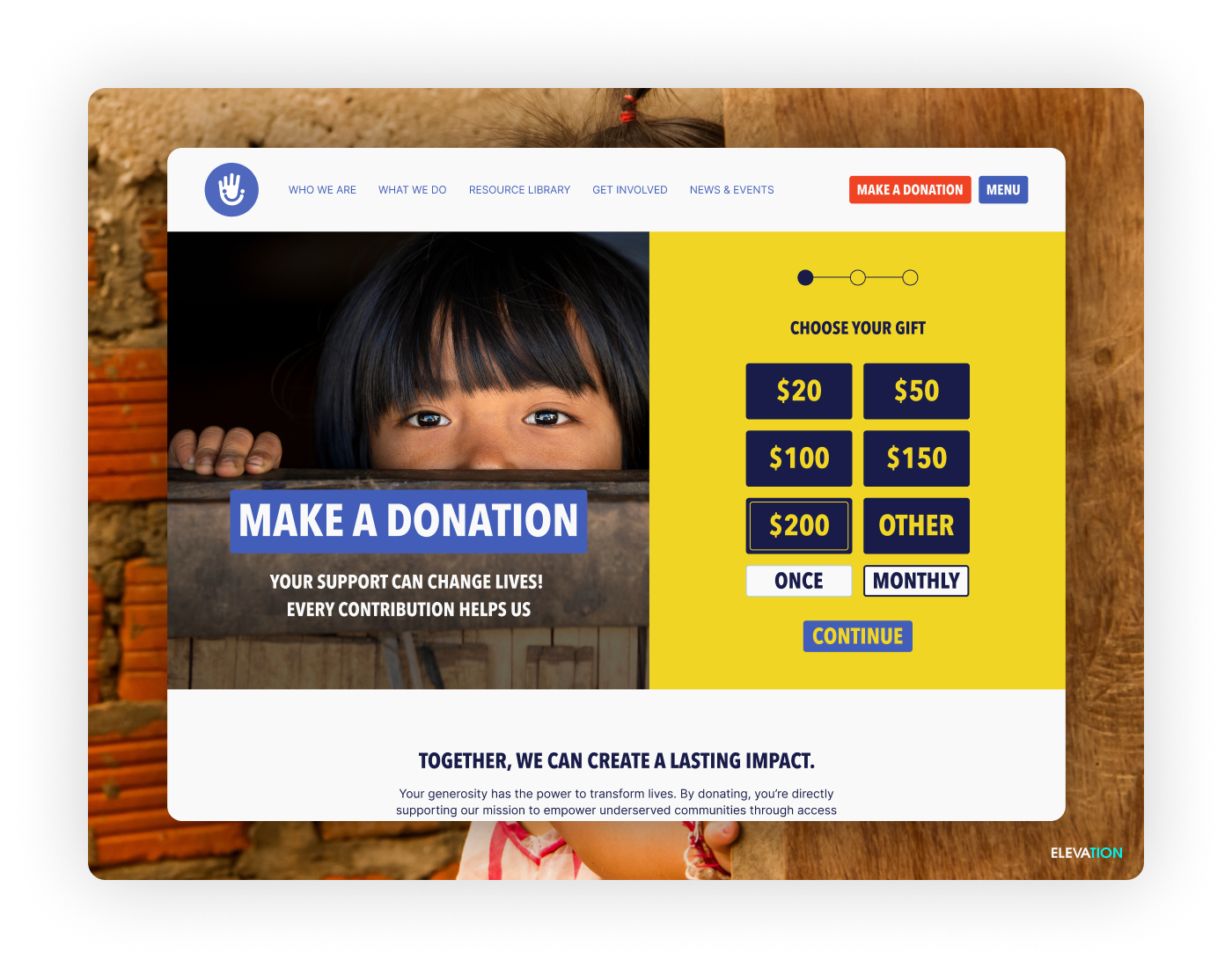It’s no secret that websites are one of the main tools that nonprofits use to attract prospects, converting casual users into new supporters. In fact, according to Double the Donation’s nonprofit fundraising statistics, between 18% and 20% of donors across the Baby Boomer, Gen X, and Millennial generational divide are most inspired to give because of nonprofits’ websites.
However, your website isn’t just critical for donor acquisition—it can also be a powerful donor retention tool. That’s why it’s so important to keep your website fresh and engaging. With a well-crafted and effective nonprofit website, you can better engage site visitors and keep supporters invested in your cause.
Of course, there are a number of website best practices you’ve probably heard before—such as using images to engage users or optimizing your site for mobile devices. So, to shake things up and enrich your online presence, we’ll explore some key web strategies that can have a significant impact on donor retention.
We’ll cover these tips:
- Ensure branding is consistent across your site.
- Leverage the power of your nonprofit blog.
- Streamline giving with an effective payment processor.
- Invest in integrated software solutions.
With these web-based best practices, you’ll be able to improve your online retention strategies, facilitate more online donations, and enrich the user experience for everyone who drops into your landing pages.
Ensure branding is consistent across your site
Most nonprofits seem to understand the importance of a strong branding strategy. From designing an aesthetically pleasing logo to crafting a specific voice for your messaging, branding sets your organization apart and helps you stand out.
That being said, one challenge that many organizations encounter is consistently branding their entire website. While landing pages and product pages are often constructed with the utmost care, other web pages—such as blogs, volunteer information pages, and donation pages—can fall to the wayside.
Of course, new donors may not explore every nook and cranny of your website. However, current and long-time supporters will often dig deeper into your site to look for new engagement opportunities and information as your relationship grows. If they stumble across inconsistently branded or oddly-constructed pages, they may question your organization’s professionalism and be more skeptical to donate or participate in your programs.
Leverage the power of your nonprofit blog
The longer a donor supports your nonprofit, the more likely they are to seek out sources of engagement such as events, volunteer opportunities, and educational content. This is where your nonprofit blog can be a versatile resource to educate and inspire your supporters. Plus, this will further establish your organization as a thought-leader in the social good space.
While it’s unrealistic to expect your organization to regularly create new service pages or constantly update core pages, your blog is a great resource to continually generate new content for your supporters. You can even send links to new articles in your email newsletters to enrich your communications and maximize engagement.
On top of that, an active blog can boost brand awareness and web traffic for your nonprofit by strengthening your SEO strategy. By creating a rich content resource on important nonprofit topics, your website is more likely to appear on search results pages as new or current supporters search for these topics.
Streamline giving with an effective payment processor
Considering the fact that payment processors are behind-the-scenes tools to facilitate donations, it’s unsurprising that some nonprofits may forget about this critical donation software when thinking about their online retention strategies.
Nonetheless, your payment processor is essential to the online giving experience and the broader user experience. For example, a slow, confusing, or poorly secured payment processor with limited payment options can frustrate your donors and keep them from giving. On the other hand, an effective payment solution can make giving an easy and convenient process, encouraging donations and positively impacting retention and acquisition.
According to the iATS Payments guide to nonprofit payment processing, here are just a few details to keep in mind as you consider the best payment processing service for your nonprofit:
- Hands-on customer service to assist with implementation and ongoing software use
- Thorough payment security features to prevent fraud
- Prior experience with nonprofit clients and donation processing
- Data portability and integration capabilities
- A variety of payment options
These features should help to ensure that your organization is investing in a truly effective payment processing solution for your donors’ and your organization’s benefit.
Invest in integrated software solutions
Most nonprofit professionals will agree that having the right software can vastly improve their ability to engage, communicate with, and retain donors. However, beyond just investing in the right technology, another important feature to keep in mind is integration.
Integration is a feature that allows different platforms, tools, and software to connect into a unique system. And by investing in web tools that can integrate—such as your CMS, event registration tools, and donation processor—you can facilitate the easy transfer and organization of data between software systems.
For example, by integrating your payment software with your CRM, you can seamlessly organize important payment and personal information in your records. One obvious benefit is that these kinds of integrations will save your nonprofit time and money. Additionally, they can also directly contribute to more effective communication strategies by allowing you to easily leverage donor data to personalize outreach, engage donors, and retain support.
Improving your rates of donor retention is no easy task, but your website is a great place to focus your attention if you want to better engage supporters and strengthen their relationships with your nonprofit. In particular, these less-talked-about web insights will improve online supporter experiences in surprising ways, helping you to round out your website strategies and optimize your online presence.



